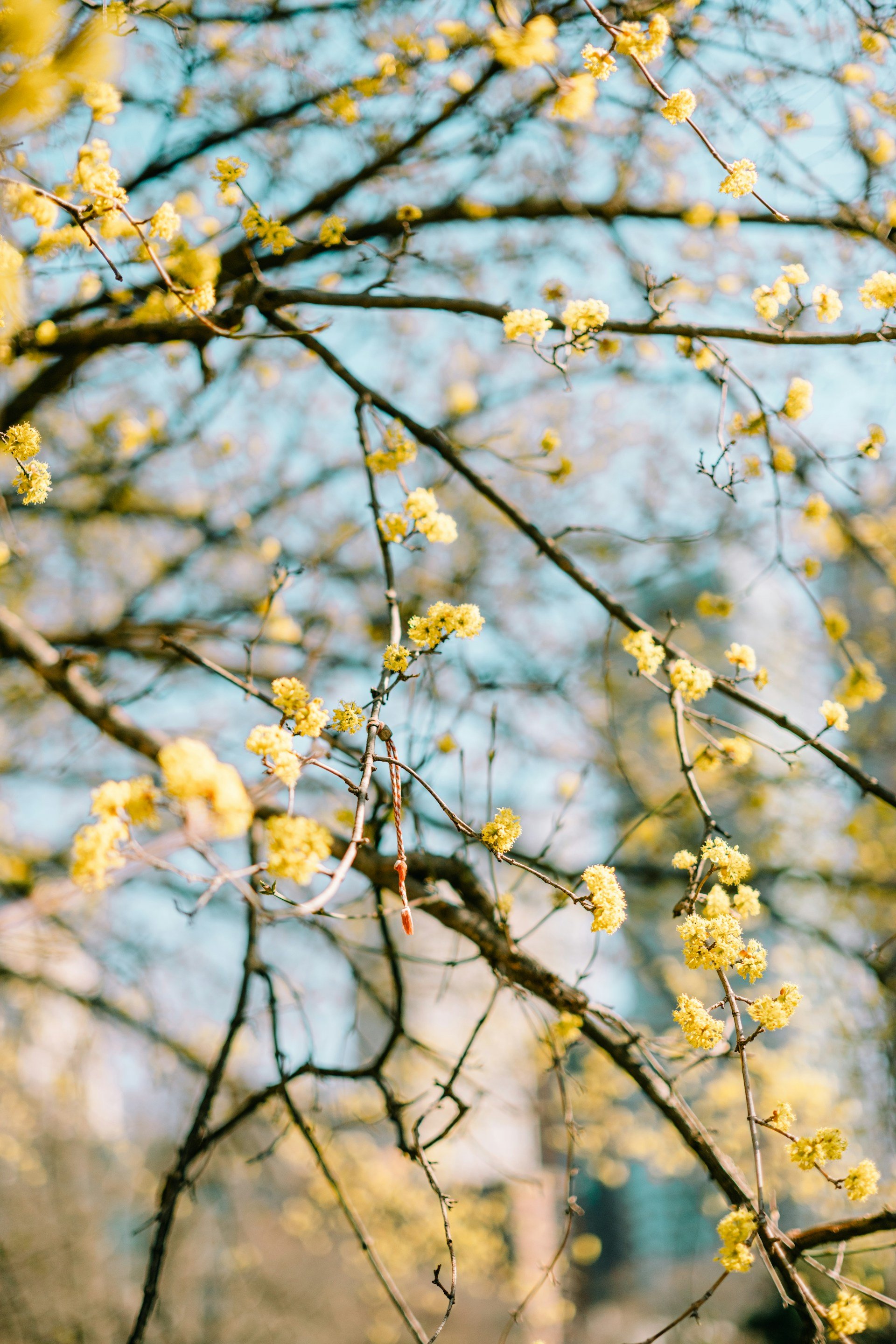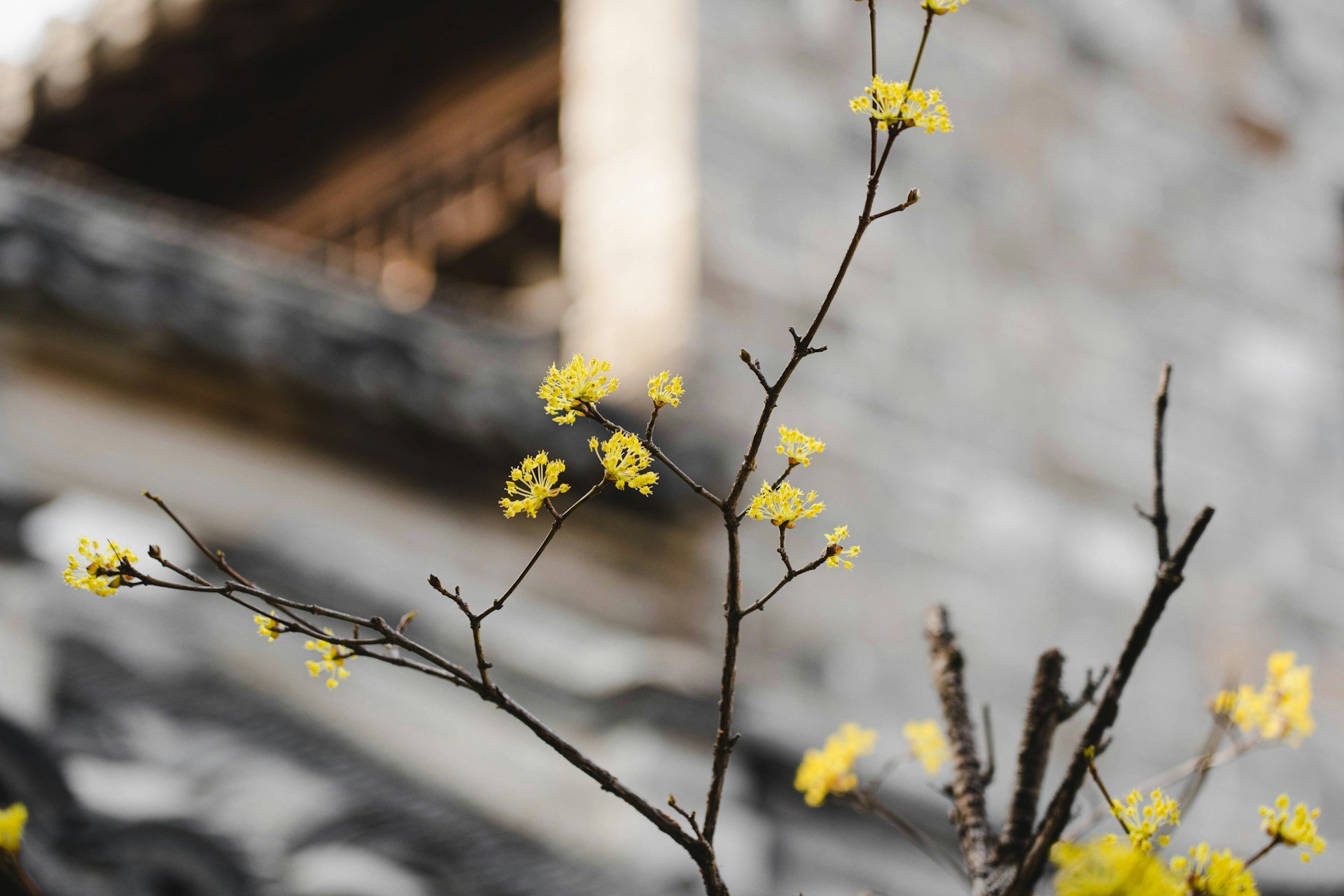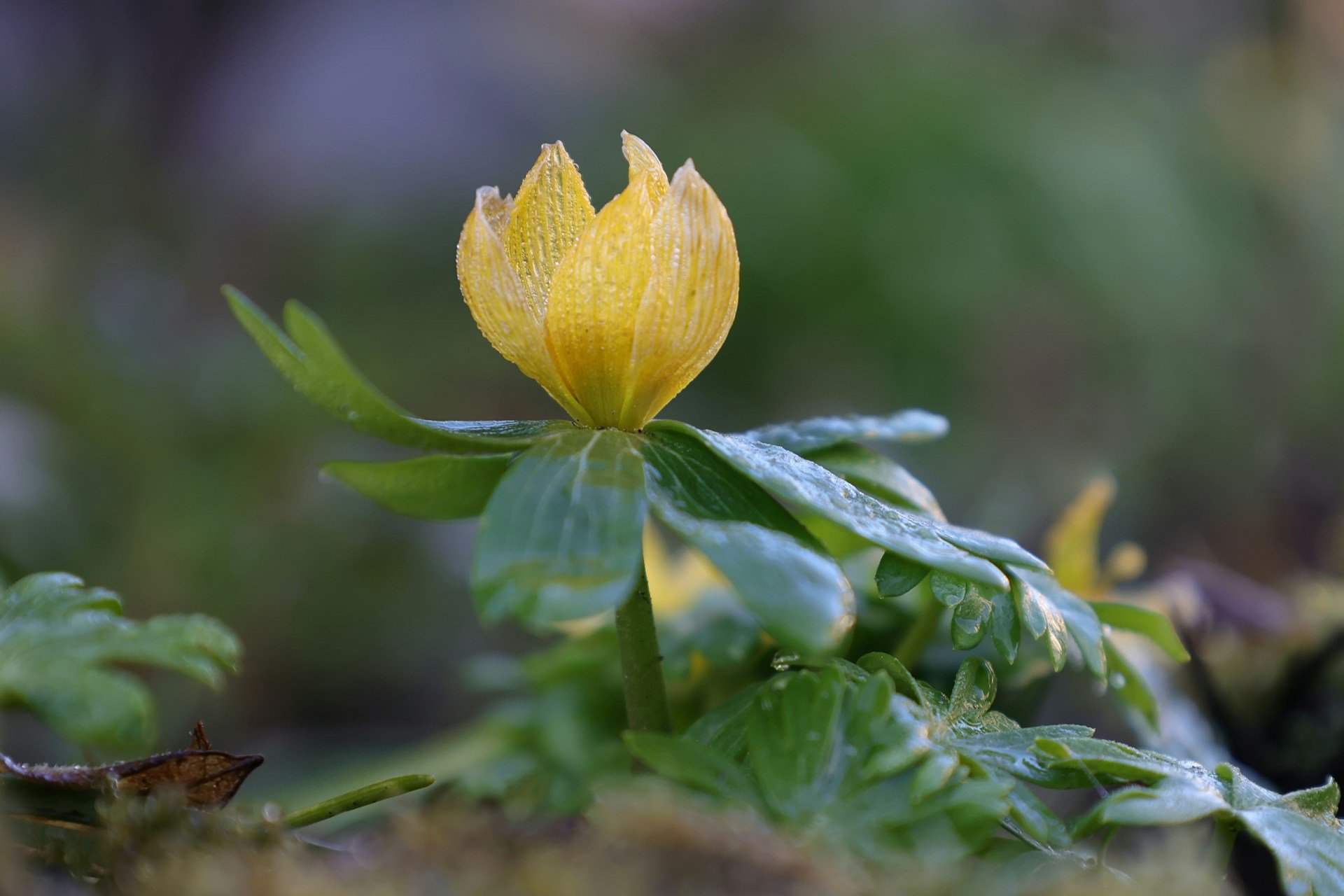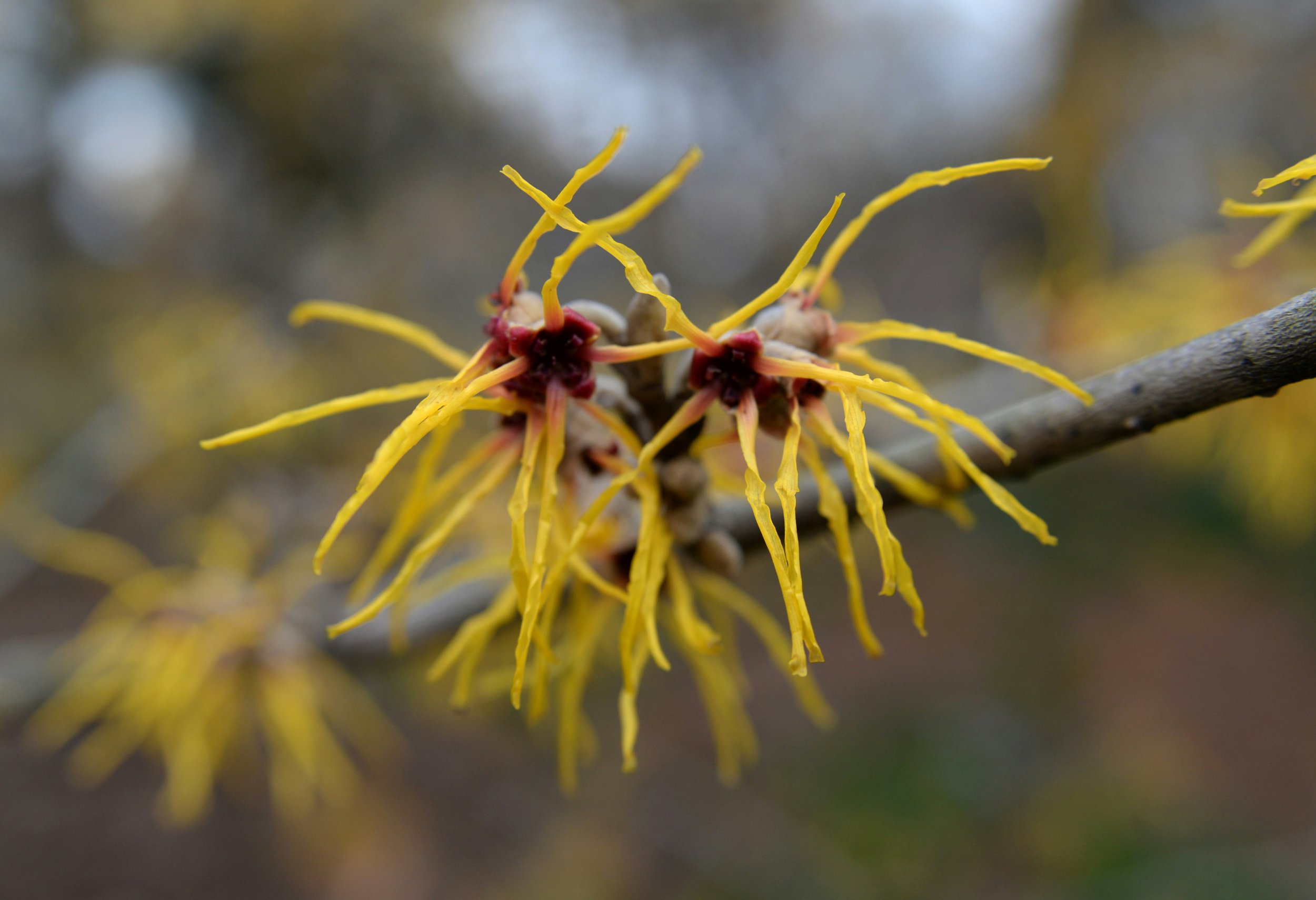February Garden Moodboard: Explore the February Plants
Discover 5 Must-Have February Plants for Your Garden!
Explore the Beauty of February's Favorite Plants: Mimosa, Cornelian Cherry, Paper Bush, Winter Aconite, and Witch Hazel. Dive into our article to discover their unique characteristics and benefits!
“February Colour Scheme: Moonlight yellow”
It may still be too early to be planting most things, but there is still plenty to enjoy in your February garden, especially winter-flowering scented shrubs to feed the first insects.
Edgeworthia chrysantha (Paper Bush)
Originally from woodland regions in the Himalayas and China, this plant is renowned for its exquisite flowers, typically blooming in clusters atop bare stems during late winter. Emitting a potent fragrance, these blossoms allure resilient winter insects. While in the bud, their silky white hairs create a frost-like appearance. Ideal for winter gardens, this plant thrives best in sheltered locations.
Cornus mas (Conelian Cherry)
Abundant clusters of small, acid-yellow flowers bloom on exposed branches during January and February, succeeded by vibrant red fruits in late summer, amidst deep green foliage that transforms into a rich red-purple hue come autumn. This native wild cherry stands out as a splendid focal point in woodland gardens. Thriving in well-drained soil, it flourishes under both sunny skies and partial shade, perfectly complementing companions like Lonicera fragrantissima and Galanthus nivalis for an early, aromatic showcase.
Eranthis hyemalis (Winter Aconite)
Blanketing the ground with vivid yellow, buttercup-esque blooms throughout late January and February, Winter Aconites are encircled by clusters of lush green foliage. Ideal for naturalizing beneath deciduous shrubs and trees, they offer a delightful spectacle in late winter, emerging as one of the earliest floral delights in the garden.
Hamamelis mollis (Witch Hazel)
This delightful shrub blooms with fragrant clusters of yellow flowers on its leafless branches from December through March. Its appealing hazel-like leaves transition to a beautiful yellow hue in autumn, adding to its charm. The blossoming branches can be harvested to bring a delightful winter fragrance into indoor spaces.
Acacia dealbata (Mimosa)
From winter to spring, this evergreen tree showcases fluffy, lightly scented, ball-shaped yellow flowers adorning its branch tips. Its pale green trunk and sizable, feathery, bluish-green leaves, initially tinged with purple, enhance its aesthetic appeal. As an excellent choice for conservatories, this mimosa thrives in warmer climates when planted in a sheltered position against a south-facing wall. While it may not attain the grandeur of its native Australian counterparts, it can still reach heights of 12 meters (40 feet) within two decades, necessitating ample space in the garden.
Follow Jana on Instagram for inspiring images of gardens and nature
More Tips & Advice?
Book a garden design consultation with me: jana@botaniq.nl / +31 6151 89494
Subscribe to our monthly Newsletter to get tips, recommendations, and outdoor improvement ideas.





